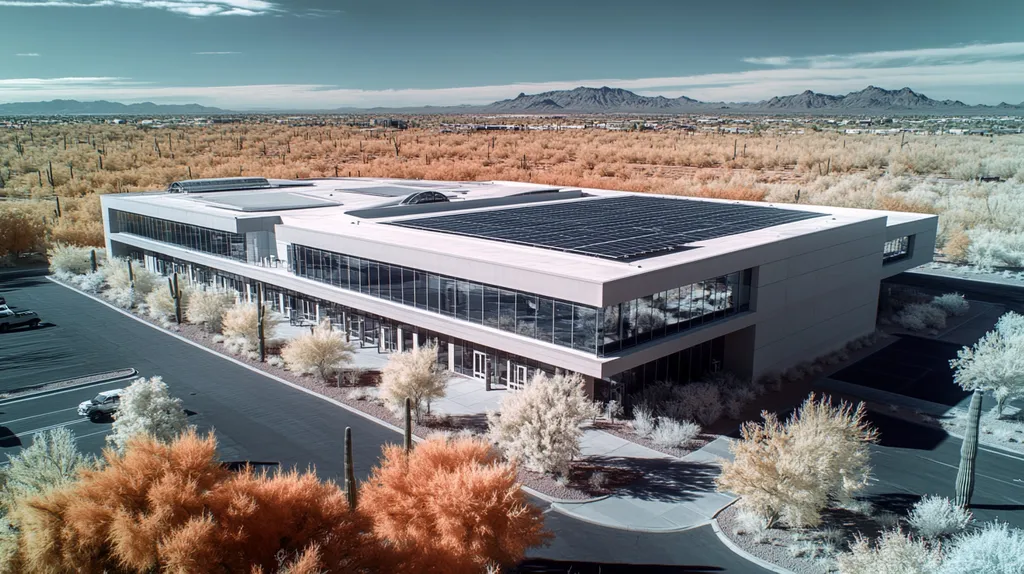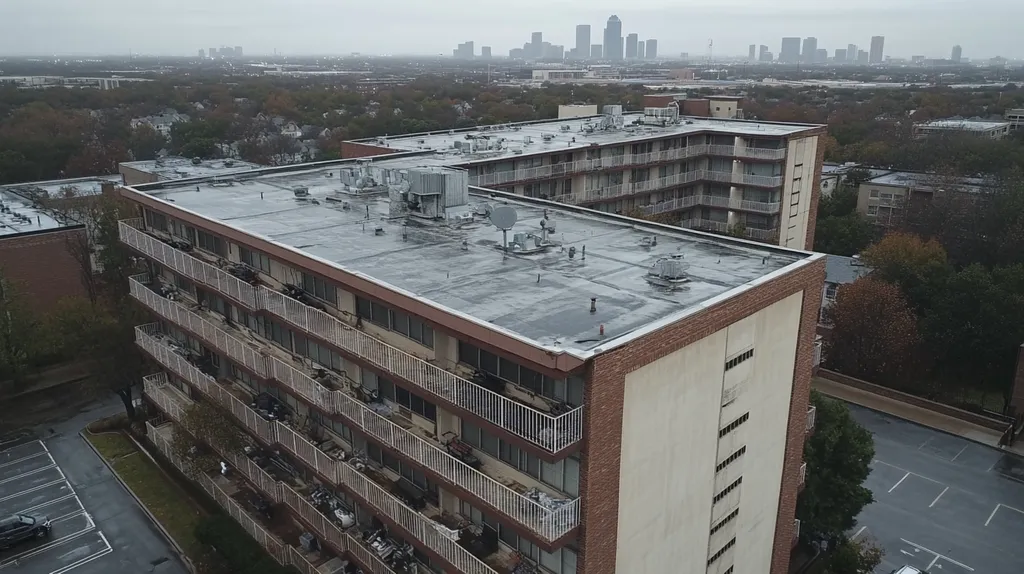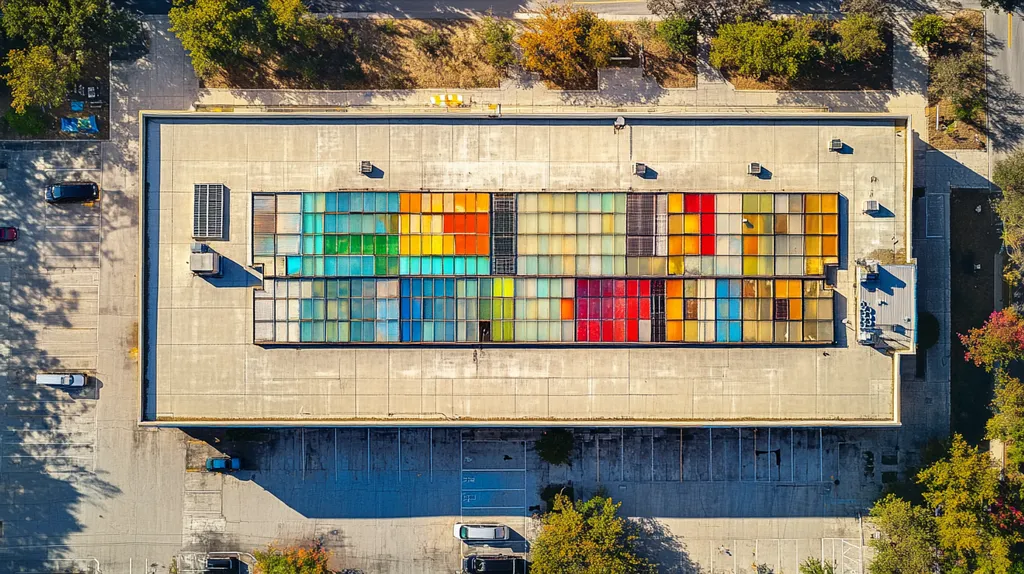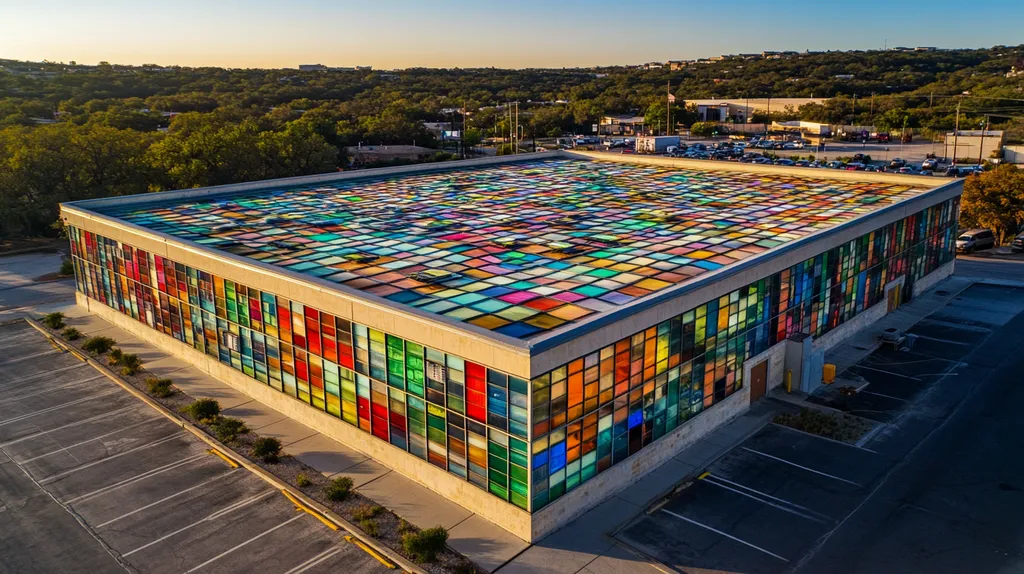In today’s volatile energy market, industrial facility managers are leaving an estimated $1.3 billion in tax incentives unclaimed due to poorly optimized roof coatings. The Department of Energy reports that effective energy-efficient coatings can reduce cooling costs by up to 30% while unlocking substantial tax benefits.
For facility managers navigating the complex intersection of performance requirements and financial incentives, understanding coating specifications has become critical. Recent regulatory changes have expanded tax credit opportunities, but also increased compliance requirements.
This comprehensive guide examines the key factors driving coating selection, tax implications, and practical implementation strategies that maximize both energy savings and available incentives.
SECTION 1: PERFORMANCE FACTORS
Industrial roofing is at a pivotal point where energy efficiency can dramatically lower operational costs while promoting sustainability. Reflective coatings, for instance, have been shown to cool roof temperatures by 30-60%, leading to significant energy savings for businesses. To maximize the benefits of energy-efficient technologies, facility managers must grasp the essential performance factors of roof coatings.
Energy Efficiency Metrics
Energy efficiency metrics are vital when assessing industrial roofing options. Coatings crafted for energy efficiency reflect a large portion of sunlight, which can greatly lower cooling costs. The U.S. Department of Energy indicates that reflective roofs can cut energy consumption by up to 15% every year.
Beyond simple savings, energy-efficient coatings are key to unlocking tax incentives and rebates for property owners. Facility managers should prioritize coatings that meet ENERGY STAR® certification and Title 24 standards, as these can lead to financial benefits that help recoup the initial investment.
Furthermore, these coatings enhance a building’s thermal performance. A well-insulated roof reduces the HVAC load, boosting energy efficiency and comfort in the facility. It’s essential for managers to routinely review energy performance metrics to confirm that the roof coating lives up to its promises.
Key Action Items
Durability and Lifespan
Durability is essential when selecting industrial roof coatings. Coatings that resist harsh conditions minimize the need for repairs and replacements. High-quality options can boast lifespans of 15 years or more, depending on materials and environmental conditions.
Investing in durable coatings reduces operational disruptions and boosts overall return on investment. A coating that lasts longer than anticipated can postpone significant costs linked to complete roof replacements.
Transparency is crucial; facility managers should insist on longevity data from manufacturers. Products with warranties of 10 years or more often signify durability and reliability.
Key Action Items
Weather Resistance and UV Protection
Weather resistance is a must-have quality for industrial roofing systems. Coatings should be able to withstand wind, rain, and extreme temperatures to maintain their effectiveness. Choosing coatings with strong weather resistance can spare managers from frequent maintenance challenges.
Additionally, UV protection is crucial to prolong the lifespan of roofing materials. Coatings that shield against harmful UV rays not only safeguard the roofing surface but also enhance energy efficiency by minimizing heat absorption. Without adequate UV protection, roofs can deteriorate quickly, setting the stage for pricey repairs.
Facility managers should also consider regional climate conditions when selecting coatings. Certain products are engineered to perform optimally under specific temperatures and precipitation levels, ensuring reliability in any weather condition.
Key Action Items
SECTION 2: FINANCIAL CONSIDERATIONS
Harnessing energy-efficient coatings on industrial roofs is not just about environmental responsibility—it’s a golden financial opportunity that can translate to impressive savings. With energy costs climbing and sustainability regulations tightening, facility managers must see energy-efficient upgrades as essential investments. A foundational aspect of these upgrades is understanding the treasure trove of tax incentives that can significantly offset initial costs. By navigating this financial landscape wisely, facility managers can bolster their roofs and their bottom lines.
Tax Deductions and Incentives
Tax deductions and incentives are crucial considerations for facility managers eyeing energy-efficient coatings. Federal programs exist to encourage such investments, including the Energy-Efficient Commercial Buildings Deduction, which offers up to $1.80 per square foot depending on achieved energy savings. This can mean real dollars back in your pocket!
In addition, many states provide supplementary incentives that amplify these federal benefits, effectively reducing upfront costs and making energy-efficient roofs even more appealing. By tapping into these financial incentives, facility managers can swiftly recover some of their initial investments.
It’s imperative to understand eligibility requirements for these programs. Consulting with tax professionals or energy consultants can ease compliance and help maximize available deductions. Overlooking these golden opportunities could lead to significant financial losses in the long run.
Key Action Items
Cost-Benefit Analysis of Coatings
A comprehensive cost-benefit analysis is vital for facility managers before investing in energy-efficient coatings. While the initial price tag can be intimidating, focusing on total lifecycle costs unveils a brighter picture. Research shows that energy-efficient coatings may reduce cooling costs by as much as 30% in certain climates, leading to substantial annual savings.
Additionally, the right coating extends the roof’s lifespan, translating into fewer repairs and replacements over time. Facility managers should evaluate both the upfront costs and the comprehensive financial impact throughout the roof’s life cycle.
Investing in these coatings also enhances building aesthetics and overall value. Higher property value can favor insurance rates and improve resale terms, ensuring a promising return on investment. Engaging experienced contractors can provide valuable insights and accurate forecasts to support financial evaluations.
Key Action Items
Section 179 and Section 179D Implications
Sections 179 and 179D of the Internal Revenue Code unlock valuable benefits for properties making energy-efficient upgrades. Section 179 enables businesses to deduct the full cost of qualifying equipment during the tax year of purchase, which can significantly relieve cash flow constraints.
Meanwhile, Section 179D zeroes in on energy-efficient commercial buildings, offering perks for projects that achieve notable energy reductions. The application of reflective coatings that lowers thermal stress on roofs can make these projects eligible for considerable deductions.
Facility managers must stay updated on the specific requirements for these sections—including necessary certifications and qualifying factors. Collaborating with professional consultants can ensure compliance and help optimize deductions.
Key Action Items
SECTION 3: COMPLIANCE REQUIREMENTS
Facility managers are under increasing pressure to meet energy efficiency standards, particularly concerning roofing solutions. The U.S. Department of Energy highlights that adhering to these guidelines can unlock significant tax incentives. Navigating the compliance landscape, encompassing DOE-certified software verification, third-party inspections, and alignment with the Energy Policy Act, is crucial for maximizing benefits while minimizing liabilities. Maintaining compliance boosts a facility’s energy credentials and enhances its financial performance.
DOE-Certified Software Verification
Utilizing DOE-certified software is essential for accurately evaluating the energy performance of roof coatings. This software analyzes thermal performance and reflects energy-saving potential, aiding informed decision-making. Facilities must ensure their chosen software is current and validated by the Department of Energy to qualify for available incentives.
Moreover, this rigorous verification process enhances credibility with stakeholders, enabling a facility to confidently present its energy-use data, which can lead to improved financing options and collaborations. Managers should regularly examine software capabilities to stay aligned with evolving regulations.
For those pursuing tax incentives, conducting a proper energy analysis with certified tools can streamline claims processing. Neglecting recognized software could result in the rejection of incentive applications, making the right tools a cornerstone of compliance.
Key Action Items
Third-Party Inspection Mandates
Almost all facilities aiming for compliance with energy efficiency standards must meet third-party inspection mandates. These inspections provide an independent evaluation of installed roof coatings, verifying their performance and compliance with federal regulations. This ensures adherence to standards while protecting the facility’s investment.
Facility managers should schedule these inspections regularly, especially following major roofing updates or coating changes. Documentation from these inspections is crucial for tax incentive applications, as it supplies necessary proof of compliance and performance.
Selecting a qualified third-party inspector is paramount. Inspectors need to be well-versed in the latest energy standards and requirements for roofing products. A thorough inspection helps identify potential issues early, enabling timely remediation.
Key Action Items
Compliance with Energy Policy Act
The Energy Policy Act sets forth guidelines that facility managers must grasp to maximize their roofing investments. This act encourages energy efficiency improvements across numerous sectors, including industrial roofing. Compliance not only meets legal requirements but also opens the door to potential tax credits and deductions.
To fully leverage the benefits of the Energy Policy Act, facility managers should familiarize themselves with specific provisions concerning roofing technologies. For instance, qualified energy-efficient roofing systems can carry significant financial incentives, but they must adhere to strict performance criteria.
Documentation is often necessary to demonstrate compliance, including manufacturer specifications and installation details. Keeping thorough records will ease the process of claiming tax benefits and help avoid non-compliance penalties. Engaging energy policy experts can help decode complex regulations and maximize available incentives.
Key Action Items
SECTION 4: RISK MANAGEMENT
Risk management in roofing is not just a box to check; it’s a fundamental strategy to safeguard a facility’s future. Ignoring leak prevention and waterproofing may lead to costly consequences like water intrusion, which can disrupt operations and compromise safety. For facility managers, a solid understanding of risk factors associated with roof performance is key to protecting valuable assets while ensuring compliance with regulations.
Leak Prevention and Waterproofing
Leak prevention is a non-negotiable aspect of maintaining a sturdy industrial roof. Even minor leaks can escalate into significant water damage, disrupting production and incurring hefty repair costs. To combat this, facility managers should invest in advanced waterproofing coatings that fortify the roof against moisture.
Conducting regular inspections is vital to catch vulnerabilities early on, such as cracks or weakened seams. By implementing a proactive maintenance program, managers can address issues before they escalate into major problems. Facilities prioritizing high-quality waterproofing solutions often benefit from reduced insurance costs and a longer roof lifespan.
Additionally, training staff to spot early signs of leaks fosters a culture of vigilance that further protects the investment in roofing systems.
Key Action Items
Thermal Expansion and Contraction
Thermal expansion and contraction can wreak havoc on industrial roofing systems, especially in regions prone to extreme temperatures. If not managed wisely, these natural movements can cause material fatigue and seam failures, leading to leaks. Understanding how roofing materials react to temperature changes is essential for long-lasting durability.
Facility managers should carefully select roofing materials engineered to accommodate these temperature fluctuations. For example, using flexible coatings helps reduce stress on seams and joints. Regular performance evaluations during seasonal transitions can highlight underlying issues needing attention.
Incorporating design elements like expansion joints can also help mitigate risks from thermal movement, ultimately lowering maintenance costs and extending the roof’s life.
Key Action Items
Chemical and Environmental Resistance
Industrial roofs often face exposure to harsh chemicals and environmental factors that can erode roofing materials over time. Facilities near manufacturing zones, for example, are at a higher risk of damage from spills or emissions. To guard against these threats, selecting roofing systems specifically designed for chemical resistance is essential.
Opting for coatings with robust environmental resistance not only lengthens the roof’s lifespan but also helps satisfy safety regulations. Facility managers should conduct thorough risk assessments to evaluate exposure levels and make informed material choices.
Additionally, establishing regular cleaning and assessment protocols can help identify wear stemming from chemical interactions, protecting the roof while ensuring a safe working environment for employees.
Key Action Items
SECTION 5: OPERATIONAL PROCEDURES
Effective operational procedures are the backbone of ensuring energy-efficient coatings on industrial roofs deliver their full potential. By following these steps, facility managers can enhance roof longevity while maximizing tax incentives. A study shows that well-maintained roofs may save up to 30% on energy costs, highlighting the financial benefits at stake. This section outlines key steps for successful coating application, from detailed inspections to quality checks.
Roof Inspection and Assessment
A thorough roof inspection kicks off the entire process and is crucial for optimal outcomes. Facility managers need to dive into the current condition of the roof, identifying damage or any signs of wear and tear. This initial assessment is invaluable for spotting necessary repairs and determining if coating applications are viable.
During the evaluation, professionals should inspect existing materials, surfaces, and drainage systems. Ignoring neglected areas can lead to moisture build-up, jeopardizing the roof’s integrity. An understanding of these factors is essential for implementing effective energy efficiency solutions.
Regular inspections also uncover opportunities for tax incentives. Spotting energy-efficient features within the roofing system enhances eligibility for various programs. Accurate documentation of all findings will aid in future reference and tax benefit applications.
Key Action Items
Surface Preparation and Coating Application
With inspection results in hand, the next essential step is surface preparation. Proper cleaning and repairs are required to guarantee effective adhesion of coatings. Contaminants like dust and moisture can severely impact the performance of coatings, potentially leading to premature failure.
Cleaning methods may vary, with pressure washing or chemical cleaning suited to different roof types. Adhering to manufacturer guidelines is crucial during this step to prevent damage to the roof surface.
Once surfaces are primed, applying energy-efficient coatings can proceed according to established protocols. Selecting the right type of coating to suit the building’s needs and climate is vital; reflective coatings significantly reduce heat absorption and improve energy efficiency.
Key Action Items
Final Inspection and Quality Assurance
The final inspection is a crucial moment that solidifies the success of the entire coating project. This stage should confirm that the coating has been applied correctly, meeting all specified requirements. Thorough documentation during this final inspection helps identify any areas that may require further work.
Facility managers should examine the coating for consistency in thickness and adherence. Implementing regular quality assurance checks safeguards against future complications, supporting sustained energy efficiency.
Additionally, recording final results can be beneficial when it comes to claiming tax credits. Compliance with project specifications aligns with the requirements laid out by incentive programs.
Key Action Items
SECTION 5: OPERATIONAL PROCEDURES
Robust operational procedures are key to unlocking the full potential of energy-efficient coatings on industrial roofs. These steps not only prolong the life of the roof but also enable facility managers to take full advantage of tax incentives. Research shows well-maintained roofs can reduce energy costs by up to 30%, highlighting the financial stakes involved. This section details essential steps for successful coating application, from initial inspections to final quality checks.
Roof Inspection and Assessment
A comprehensive roof inspection is the foundation for effective roofing solutions. Facility managers should closely evaluate the current state of the roof to identify any signs of damage or wear. Highlighting issues early enhances the decision-making process, ensuring that necessary repairs are made before applying coatings.
During the assessment, it’s crucial to inspect the existing materials, surfaces, and drainage systems. Areas that have been neglected can promote moisture buildup, compromising roof integrity. Understanding these factors lays the groundwork for implementing effective energy efficiency improvements.
Regular inspections also create opportunities for tax incentives. Recognizing energy-efficient features in the roofing system can boost eligibility for various rebate programs. Managers must document all findings, creating a valuable reference for tax benefit applications.
Key Action Items
Surface Preparation and Coating Application
Once inspection results have been reviewed, surface preparation is the next vital step. Proper cleaning and necessary repairs are essential for ensuring coatings adhere effectively. Surfaces contaminated with dust, debris, or moisture can severely impair coating performance, leading to premature failures.
The methods for cleaning may differ based on the roof type, with options including pressure washing or chemical cleaning. Facility managers should adhere to manufacturer guidelines to prevent any damage during preparation.
After the surfaces are cleaned and primed, it’s time to apply the energy-efficient coatings according to established protocols. Choosing the right type of coating that aligns with the building’s specific needs and environmental conditions is crucial. Reflective coatings can notably enhance energy efficiency through reduced heat absorption.
Key Action Items
Final Inspection and Quality Assurance
The final inspection represents a pivotal moment in confirming the successful application of the coatings. This stage verifies that all coatings have been applied correctly and meet specified requirements. Thorough documentation during this step helps identify any areas requiring additional work.
Facility managers should focus on checking for consistency in coating thickness and adherence to surfaces. Regular quality assurance checks can help mitigate future complications, supporting sustained energy efficiency.
Additionally, recording the final results can be beneficial for future tax credit claims. Ensuring compliance with project specifications aligns with the requirements for various incentive programs.
Enlisting third-party inspectors can add credibility to the quality assurance process, ensuring that the applied coatings deliver on their promise to lower operational costs.
Key Action Items
Moving Forward
With $1.3 billion in unclaimed tax incentives at stake, facility managers can no longer afford to overlook energy-efficient roof coatings as a strategic investment. The Department of Energy reports that optimized coating systems reduce cooling costs by 15-30% while unlocking substantial tax benefits.
Success requires careful attention to three critical areas: performance metrics that meet ENERGY STAR® and Title 24 standards, thorough documentation for tax compliance, and proper installation verified through third-party inspection.
The integration of energy-efficient coatings represents more than a facility upgrade—it’s a financial opportunity that directly impacts the bottom line through reduced operating costs and maximized tax incentives.
For industrial facilities seeking both sustainability and profitability, implementing these coating solutions is no longer optional—it’s imperative for maintaining competitive advantage in today’s energy-conscious market.
FREQUENTLY ASKED QUESTIONS
Q. What performance factors should I consider for my industrial roof?
A. Performance factors like energy efficiency, durability, and weather resistance are key considerations. Coating choices that reflect sunlight can drastically cut cooling costs, while durable options will extend the lifespan of your roof and minimize disruptions. Regular assessments of these factors can optimize your roof’s effectiveness.
Q. How do tax incentives work for commercial roofs?
A. Tax incentives like the Energy-Efficient Commercial Buildings Deduction offer significant savings on energy-efficient upgrades. Properties meeting specific energy savings can qualify for deductions up to $1.80 per square foot. Researching state-specific incentives can further ease your upfront costs and improve financial outcomes.
Q. What compliance requirements should I follow for industrial roofs?
A. Compliance requirements often involve adherence to energy efficiency standards and verification by DOE-certified software. Third-party inspections may also be necessary to confirm that your roof coatings meet federal regulations, thus unlocking valuable tax incentives while maintaining liabilities.
Q. How can I manage risks associated with my industrial roof?
A. Effective risk management involves proactive leak prevention, waterproofing, and regular inspections of thermal expansion. Coupling well-chosen materials designed for your environment with systematic evaluation can minimize long-term damage and costly repairs, keeping your operations running smoothly.
Q. What key operational procedures should I implement for energy-efficient coatings?
A. Implementing detailed operational procedures includes scheduling regular inspections, proper surface preparation, and conducting thorough final evaluations. Following these steps ensures effective application and maintenance of your coatings, maximizing their energy efficiency and your potential tax benefits.
Q. How often should I inspect my industrial roof?
A. It’s advisable to schedule comprehensive inspections bi-annually. Regular evaluations help identify potential issues early, ensuring timely repairs and maintenance. Documentation during these inspections can also enhance your eligibility for energy-efficient incentives and warranties.
Q. Can waterproof coatings really extend my roof’s life?
A. Yes, waterproof coatings significantly extend the roof’s lifespan by preventing moisture intrusion and subsequent damage. Investing in high-quality waterproofing materials can reduce maintenance costs and repair needs, promoting overall durability and operational efficiency for your industrial roof.











